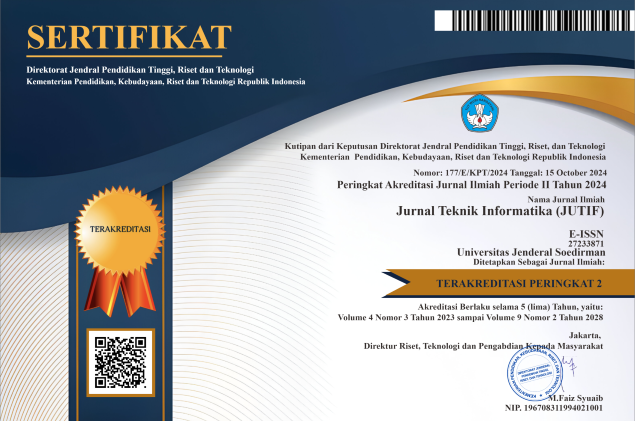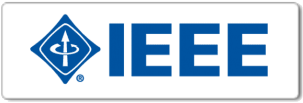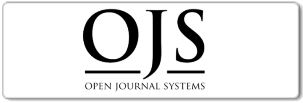YOLOv9 – BASED TRAFFIC SIGN DETECTION UNDER VARYING LIGHTING CONDITIONS
DOI:
https://doi.org/10.52436/1.jutif.2025.6.1.3917Keywords:
Computer Vision, Intersection over Union (IoU), Object Detection, Traffic signs, YOLOAbstract
Traffic signs are an important element that functions as a guide, regulator and safety supervisor for road users. In Indonesia, there are various types of traffic signs, including recommendation, prohibition, warning, command, and direction signs, which use numbers, letters, symbols, or a combination of the three to convey clear information to drivers. Based on data from the Indonesian National Police, 148,575 cases of traffic accidents were recorded in 2023, which continues to increase every day due to human error, poor road conditions, and lack of clarity and completeness of signs. This research aims to develop traffic sign detection technology using the YOLOv9 algorithm, starting with collecting 7,980 images from the Roboflow platform, which are then labeled and trained, and evaluated using metrics such as Accuracy, Precision, Recall, F1-Score, and Intersection over Union (IoU ). Then the model was tested to detect traffic signs in various media, such as images and videos. The results of this research show that the YOLO v9 model has the best performance compared to SSD MobileNet v2 and Faster RCNN. The YOLOv9 model achieved an accuracy of 94%, while SSD MobileNet v2 only had an accuracy of 43%, and Faster RCNN had an accuracy of 57%. From the research, it can be concluded that the YOLOv9 model is optimal enough to detect traffic signs in various lighting conditions, because the model has the best performance compared to the other two models, especially in terms of accuracy and balance between precision and recall. This research is expected to support the development of safer autonomous vehicles and intelligent transportation systems through optimal traffic sign detection.
Downloads
References
M. Akbar, A. S. Purnomo, and S. Supatman, “Multi-Scale Convolutional Networks untuk Pengenalan Rambu Lalu Lintas di Indonesia,” J. Sisfokom (Sistem Inf. dan Komputer), vol. 11, no. 3, pp. 310–315, 2022, doi: 10.32736/sisfokom.v11i3.1452.
Ajeng Dwita Ayuningtyas, “2023 Capai Angka Tertinggi Kecelakaan Lalu Lintas 5 Tahun Terakhir,” GoodStats v2.3.2. [Online]. Available: https://goodstats.id/article/2023-capai-angka-tertinggi-kecelakaan-lalu-lintas-5-tahun-terakhir-z67bk
D. A. Abdurrafi, M. T. Alawiy, and B. M. Basuki, “Deteksi Klasifikasi Dan Menghitung Kendaraan Berbasis Algoritma You Only Look Once (YOLO) Menggunakan Kamera CCTV,” Sci. Electro, no. 1, pp. 1–9, 2023, [Online]. Available: https://jim.unisma.ac.id/index.php/jte/article/viewFile/21551/16069
R. Pauziah and A. Herliana, “Implementasi Deteksi Rambu Lalu Lintas Menggunakan Metode Extreme Learning Machine,” E-Prosiding Sist. Inf., vol. x, no. x, pp. 36–41, 2021.
R. A. Kusuma, Y. Sholva, and R. D. Nyoto, “39255-75676626433-2-Pb,” vol. 08, no. 3, pp. 230–238, 2020, doi: 10.26418/justin.v8i1.39255.
N. C. Kuncoro, S. A. Wibowo, and K. Usman, “Analisis Kinerja Prototipe Traffic Sign Recognition Untuk Sistem Autonomous Car Menggunakan You Only Look Once Performance Analysis of Prototyping Traffic Sign Recognition for Autonomous Car System By Using You Only Look Once,” vol. 7, no. 3, pp. 8872–8878, 2020.
M. Ikbal and R. A. Saputra, “Pengenalan Rambu Lalu Lintas Menggunakan Metode Yolov8,” JIKA (Jurnal Inform. Univ. Muhammadiyah Tangerang, vol. 8, no. 2, pp. 204–212, 2024.
M. Zulfikri, K. Abd Latif, R. Hammad, M. Syahrir, and P. Studi, “Deteksi dan Estimasi Kecepatan Kendaraan dalam Sistem Pengawasan Lalu Lintas Menggunakan Pengolahan Citra Detection and Estimation of Vehicle Speed in Traffic Control Systems Using Image Processing,” Agustus, vol. 20, no. 3, pp. 455–467, 2021.
Y. Lai, “Traffic Sign Recognition Based on Deep Learning Technique,” ACM Int. Conf. Proceeding Ser., no. July 2021, pp. 62–68, 2022, doi: 10.1145/3546157.3546167.
P. Jiang, D. Ergu, F. Liu, Y. Cai, and B. Ma, “A Review of Yolo Algorithm Developments,” Procedia Comput. Sci., vol. 199, pp. 1066–1073, 2021, doi: 10.1016/j.procs.2022.01.135.
D. Nafis Alfarizi, R. Agung Pangestu, D. Aditya, M. Adi Setiawan, and P. Rosyani, “Penggunaan Metode YOLO Pada Deteksi Objek: Sebuah Tinjauan Literatur Sistematis,” J. Artif. Intel. dan Sist. Penunjang Keputusan, vol. 1, no. 1, pp. 54–63, 2023, [Online]. Available: https://jurnalmahasiswa.com/index.php/aidanspk
P. Saputra, B.M., Ilman, M.Z., Audina, M., Jepri, M., & Rosyani, “Sistem Pengenalan Tanda Lalu Lintas Menggunakan Algoritma YOLO,” JURIHUM J. Inov. dan Hum., vol. Volume 1, no. 1, pp. 161–164, 2023.
M. Yaseen, “WHAT IS YOLOV9: AN IN-DEPTH EXPLORATION OF THE INTERNAL FEATURES OF THE NEXT-GENERATION OBJECT DETECTOR,” vol. 9, 2024.
M. Li, L. Zhang, L. Li, and W. Song, “Yolo-Based Traffic Sign Recognition Algorithm,” Comput. Intell. Neurosci., vol. 2022, 2022, doi: 10.1155/2022/2682921.
S. Qu, X. Yang, H. Zhou, and Y. Xie, “Improved YOLOv5-based for small traffic sign detection under complex weather,” Sci. Rep., vol. 13, no. 1, pp. 1–12, 2023, doi: 10.1038/s41598-023-42753-3.
Y. Sinha, B. Hadassa, G. Krishna, and C. V. Ravi Kumar, “Traffic sign recognition using convolutional neural networks,” Int. J. Electr. Eng. Technol., vol. 11, no. 3, pp. 210–217, 2020, doi: 10.14710/jtsiskom.2021.13959.
Barokah Asmarahman Takarob, “Deteksidan Identifikasi Rambu-Rambu Lalu Lintasberbasis Algoritma You Only Look Once (YOLO),” Univ. Muhammadiyah Jakarta, pp. 1–46, 2022, [Online]. Available: http://repository.umj.ac.id/11987/
A. A. G. Bagus Janapriya, “Pengenalan Jenis Rambu Lalu Lintas menggunakan Metode YOLO V5,” JELIKU (Jurnal Elektron. Ilmu Komput. Udayana), vol. 11, no. 4, p. 1011, 2023, doi: 10.24843/jlk.2023.v11.i04.p32.
A. W. Sudjana and H. Supeno, “Implementasi Deep Learning untuk Object Detection Menggunakan Algoritma YOLO (You Only Look Once) pada Rambu Lalu Lintas di Indonesia,” Univ. Pas., pp. 1–8, 2021.
A. S. Kusuma, A. I. Pradana, and B. W. Pamekas, “3201-Naskah Publikasi-14728-1-10-20240725,” vol. 7, pp. 166–179, 2024.
I. Septiana, F. Rizki, A. Niken, A. Cahya, and A. F. Syifa, “Deteksi Orang dengan Menggunakan Algoritma YOLOv3,” vol. 2, no. 1, pp. 54–57, 2024.
M. Fauzan Ridho, Fransiskus Panca, Welly Yandi, and Almeera Amsana Rachmani, “Drowsiness Detection in the Advanced Driver-Assistance System using YOLO V5 Detection Model,” ELECTRON J. Ilm. Tek. Elektro, vol. 5, no. 1, pp. 130–137, 2024, doi: 10.33019/electron.v5i1.136.
Muhammad Agus Syaputra, Josua Pinem, Afiq Alghazali Lubis, and Yuva Denia, “Implementasi Algoritma YOLO Dalam Pengklasifikasian Objek Transportasi pada Lalu Lintas Kota Medan,” Pop. J. Penelit. Mhs., vol. 3, no. 1, pp. 13–23, 2023, doi: 10.58192/populer.v3i1.1641.
Y. Fadhillah et al., “ADVANCING VEHICLE DETECTION WITH YOLOV9 : INTEGRATING PROGRAMMABLE GRADIENT INFORMATION,” vol. 5, no. 2, pp. 90–100, 2024.
P. Hallaj, “What is Intersection over Union (IoU) in Object Detection?,” Medium.Com. [Online]. Available: https://medium.com/@pouyahallaj/what-is-intersection-over-union-iou-in-object-detection-648d147ed5eb#:~:text=The IoU formula is relatively straightforward%3A IoU %3D,represents the combined area of both bounding boxes.


























